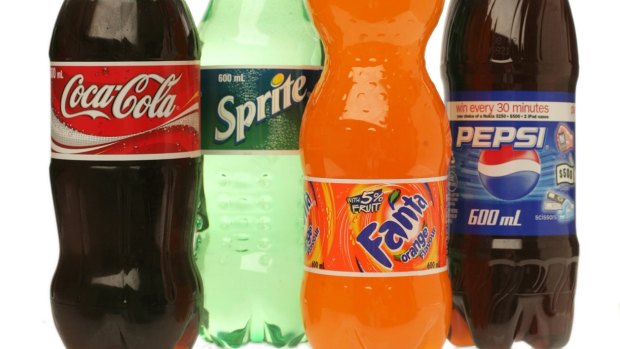By Dana McCauley
Soft drink and junk food manufacturers will be forced to remove "misleading" energy icons from labels, in a move welcomed by public health advocates as a step forward in fighting Australia's obesity epidemic.
A majority of state and federal ministers agreed the energy icon displayed on confectionery products and sugary drinks instead of the health star rating was "making it difficult for consumers to compare like products" and its use should be discontinued.

Sugary drinks are more likely to display the energy icon instead of health star ratings. Credit: Rebecca Hallas
George Institute for Global Health research fellow Alexandra Jones said manufacturers were using the "misleading" energy icon, which shows the number of kilojoules per serve as a percentage of total recommended daily energy consumption, to avoid having to display a poor health star rating.
"We know the confectionery industry were lobbying really hard to keep the energy icon, so this is a welcome development," Ms Jones said.
"If manufacturers don't replace it with the health star rating, it will be further evidence that they are not going to be good corporate citizens on a voluntary basis - and the health star rating should be made mandatory."
Ministers voted for the energy icon to be discontinued as part of their response to the recommendations of a review of the health star ratings system, released on Thursday, and also agreed to consider including added sugar in nutrition information labels.
Under the health star ratings system, which food ministers agreed should remain voluntary while participation rates are monitored, packaged food and beverage products are rated between half a star and five stars.
Ms Jones said products like juices, flavoured milks and sugar-free lollies, which can attract three stars, often displayed the health star rating - while chocolates, lollies and sugary drinks were more likely to display the energy icon.
Australian Industry Group's head of confectionary Tim Piper said manufacturers would keep using a 'Be Treatwise' logo and remained opposed to mandatory star ratings because the system was flawed.
"There are confectionary products that would get four stars and we think that is misleading," Mr Piper said.
He said giving consumers information about kilojoules and serving sizes was the best approach.
The health star rating five-year review found the energy icon "is not well understood by consumers and does not provide interpretive information to support choice".
The energy icon is used on 28.5 per cent of beverages, while only 6.8 per cent of beverages use the health star ratings icon.
Manufacturers will have two years to remove energy icons from their products.